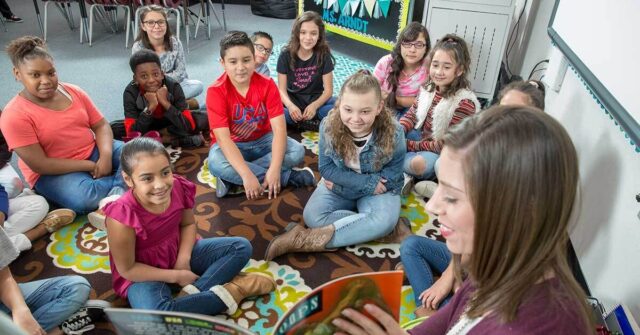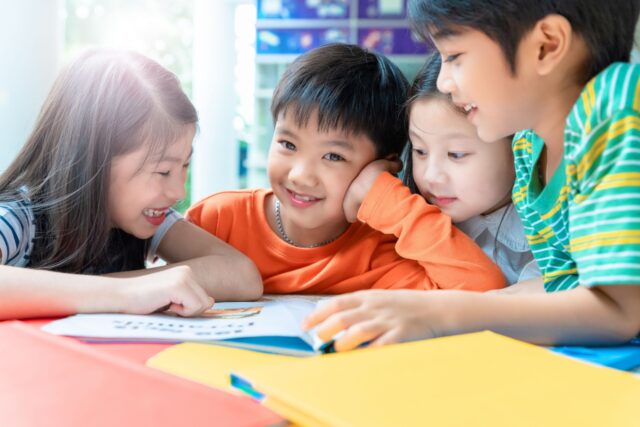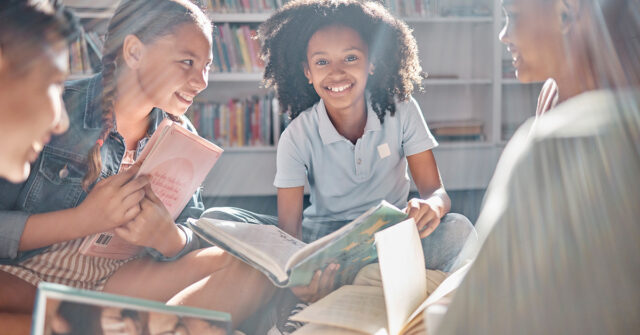
Nonfiction offers many benefits. Reading nonfiction allows us to access new content, ideas, and perspectives. Nonfiction books support comprehension and the development of critical thinking skills, and they help kids make real-world connections.
In K–2 classrooms, nonfiction texts offer additional benefits. They:
- deliver information in a way that is accessible
- help students develop a robust vocabulary
- spark curiosity
- boost engagement
- help students build knowledge, which supports their reading comprehension
- prepare students for the work of later grades.
High-quality nonfiction texts that K–2 students can actually read are hard to find. While nonfiction can be woven into read-alouds, small groups, independent work, and writing instruction, most nonfiction trade books are filled with words that many beginning readers haven’t yet learned how to read. If we want students to be able to read and comprehend nonfiction texts independently, texts containing a high percentage of decodable words are necessary.
The Jump Rope Readers Nonfiction decodables were created for K–2 students. With words that students can read and, just as importantly, full of topics they will want to read, they are just right for beginning readers.
7 Tips for Using the Jump Rope Readers Nonfiction Decodable Books
- Match kids to books and get books into kids’ hands and baggies as soon as possible. Download a free Phonic Decoding Assessment to match kids with books quickly. Alternatively, you might introduce texts to students that include the phonics features and high-frequency words you’ve already taught. Then, watch how students navigate each book, taking note of whether they could use a more accessible or more challenging book and adjust accordingly.
- Use small-group instruction to target phonics and decoding skills that students are working to solidify, and to support phonics transfer into continuous, meaningful texts. You’ll find that when the small group ends, it is invaluable to put these texts into book baggies to encourage ongoing practice during independent and partner reading.
- Be sure to keep your book introductions brief and lively. This way students can spend the bulk of the time reading these books, either in partnerships or individually. These books are designed to be used without extensive teacher scaffolding. Your brief book introductions can introduce the topic and a few non-decodable content words.
- Support knowledge building by reading aloud the “Learn more about…” section at the back of a book. Coach students to notice and discuss how the new information teaches them more about the topic. Prompts like “I notice…”, “I think…”, and “Now I realize…” can help kids say more.
- Trust that you can get kids reading these books independently. The Jump Rope Readers Nonfiction provide additional review of key phonics features and high-frequency words.
- Remember that the books are divided into chapters. These chapters can serve as reminders to pause and accumulate the text. You might encourage students to reread a chapter to build meaning and fluency before moving on to the next chapter.
- The books are powerful for upper-grade readers who are continuing to strengthen their decoding skills. Many of the titles feature genres and topics that can engage older readers, such as the Edwin and Abuelo mysteries and nonfiction books about high-interest topics like extreme weather and animals. You can draw on these books across small-group instruction and for students’ independent reading.
Learn more about the Jump Rope Readers Fiction and Nonfiction Decodables and download a free Phonic Assessment to help plan your teaching.
Editor’s note: The content of this post has been lightly adapted from A Guide to the Jump Rope Readers: Nonfiction, a component of the Jump Rope Readers Nonfiction sets.


